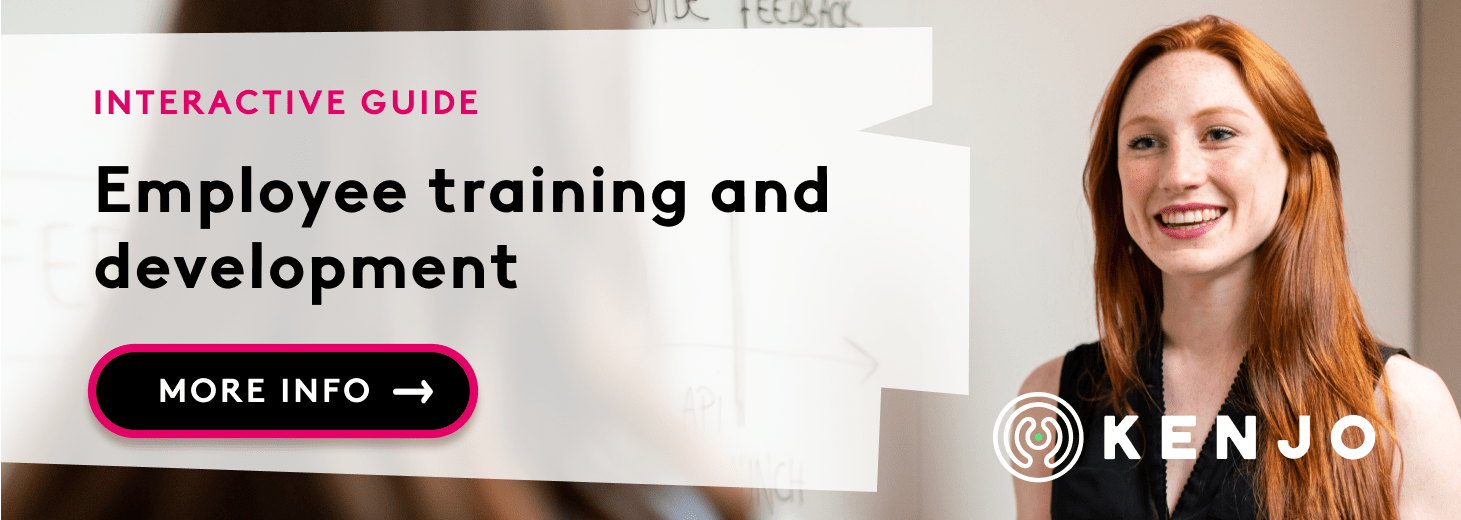Why look for outside talent when you have great employees within your company who know the culture, the business, etc.? Internal promotion is just that: selecting people who already work in the organisation, who have the skills and knowledge required to take on new responsibilities.
This type of initiative has a highly positive impact on the company: cost savings, improved motivation and engagement.
Here we explain exactly what it's all about. if you would like to know more about employee training and development read here.
What is internal promotion?
Internal promotion is a selection method where the organisation's existing employees are the candidates. So, rather than searching for external talent, it means promoting employees who have shown themselves to be capable of taking on new responsibilities.
In general, factors such as experience, training and skills demonstrated by candidates to date are taken into account in this process. Performance evaluations are often used to identify internal talent and ascertain who deserves to move up the ladder.
Internal promotion policies are employed both in private companies as well as public authorities.

The advantages of internal promotion
Introducing internal promotion procedures has huge advantages, both for the company and its employees.
Reduced recruitment time
Internal candidates are already part of the company, so it takes less time to find and “convince them”, meaning no more drawn out recruitment processes.
What's more, evaluating professionals who are part of the company is much simpler:
- Their track record is accessible.
- They are comfortable with the company culture.
- They probably don’t need to be interviewed by the team leader.
All this reduces the time involved at each stage of the recruitment process, and, consequently, the time-to-hire.
It also makes the onboarding process quicker and simpler
Every professional requires some time to find their feet in a new role, but internal hires are usually more efficient in this sense. The employee:
- Already knows how the company and its internal policies work.
- Is acquainted with their new team members.
- May already know the nature and responsibilities of their new position.
Lower recruitment costs
Internal recruitment is much cheaper than external as it does not require:
- Advertising the vacancy on job portals. It's much easier to let candidates know about opportunities via email or a poster on the notice board.
- Devoting time to sift through CVs or review databases, as simply asking team leaders or reviewing the last performance evaluations will be enough to find suitable profiles.
Bolster staff engagement
Internal promotion in the company sends the message that employees are valued and worth investing in. It gives employees the opportunity to advance their careers. Allowing them to access other positions that may interest them is good for boosting motivation and engagement. This helps to construct a culture of trust and retain talent.
Types of internal promotions in organisations
Within companies, there can be different types of internal promotions. We normally distinguish between three:
Horizontal promotion
Horizontal internal promotion is when a worker moves to a higher grade in a different department in the company.
Vertical promotion
This is probably the most well-known type of internal promotion and involves the worker moving to a more senior role than they held to date. It usually involves more responsibility and, accordingly, a pay rise.
Temporary promotion
There are also cases in which an employee receives a temporary promotion to cover a colleague's absence or maternity/paternity leave. Therefore, once this period is over, the employee will return to their previous position.
The importance of internal promotion
There’s nothing like internal promotion in an organisation to inspire and motivate employees. It is a valuable tool which can be used to achieve different objectives:
- A survey carried out by the consultancy Great Place to Work, published in the media, revealed that when people believe internal promotions are managed effectively, they are twice as likely to put in extra effort at work.
- Offering employees a challenge and goal to strive towards allows them to constantly improve, learn and develop.
- A clear internal promotion policy reduces staff turnover by half.
These are just some examples that demonstrate the importance of internal promotion. External candidates may seem enticing, but it has been shown that acquiring internal talent yields greater advantages for the company.

5 steps to implementing an internal development plan
Internal selection procedures are not so different from external ones. The main difference lies in the preparatory work, in which the recruiter needs to meticulously analyse the current workforce to find candidates.
1. Define the company’s needs
The first step of internal promotion is to set out the company’s requirements and, with that in mind, the areas needing improvement or the positions that need to be covered. At this point it is crucial to craft a good job description for the vacancy and describe all the essential professional skills and abilities that the ideal candidate will possess.
2. Establish staff selection criteria
When looking for internal talent in the company, we should establish a range of objective criteria to shortlist possible candidates for the vacancy. It is important to take into account:
- Achievements or results obtained.
- Training.
- Seniority.
- Organisational capacity.
We should also pay attention to the following factors:
- The employee’s availability and interest.
- Empathy and relationship with colleagues.
- Career path outside the company.
3. Analyse the company's HR
The time has come to analyse the internal talent in search of possible candidates. You can use your HR software to go over each employee’s record, review their last evaluations, etc. This will help you progress faster and more confidently.
It is important that candidate selection is based on the factors mentioned above to ensure it remains valid and useful. Otherwise, if we are led by other criteria, it’s possible we could miss the perfect candidate.
Another option is to advertise the vacancies and allow all staff to apply for them. You can do this by sending an email or attaching a poster to the notice board.
4. Speak to the candidates
Contact the shortlisted candidates and tell them the news. It is important to provide all the details about the position they are applying for, including what their new responsibilities would be and the financial terms. In the same way, you should explain to them how the selection process will work if they decide to go ahead. Offer them 48 hours to decide if they want to participate or not.
5. Conduct the final evaluation
The moment has come to decide which of the candidates will advance within the company. Design a selection process based on an objective evaluation of their skills and abilities for the position. It is also helpful to carry out interviews with other members of the organisation to compare results. With all this information, you can make your final decision and choose the most suitable candidate.
The main trends in internal promotion
- In economic crises, when budgets are squeezed, internal promotion is an interesting solution to avoid incurring new recruitment costs.
- More and more companies are using HR software with Artificial Intelligence to carry out internal selection procedures.
- There are also predictive analytics programs emerging that are capable of “guessing” which employee will offer better results in a certain role.



